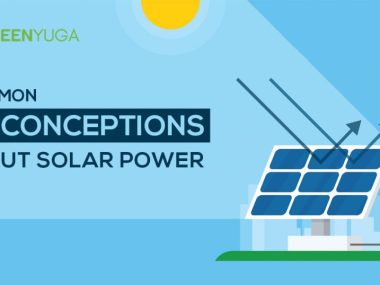How to choose the best battery for solar energy system.
Selecting the best battery for a solar energy system involves considering several factors to ensure optimal performance, longevity, and cost-effectiveness.
Also choosing the best battery for a solar energy system depends on various factors, including your specific energy needs, budget, space constraints, and desired performance characteristics. Also there are certain specifications you should use when evaluating your solar battery options, such as how long the solar battery will last or how much power it can provide. Below, learn about all of the criteria that you should use to compare your home energy storage options, as well as the different types of solar batteries.
How to compare your solar storage options
As you consider your solar-plus-storage options, you’ll come across a lot of complicated product specifications. The most important ones to use during your evaluation are the battery’s capacity & power ratings, depth of discharge (DoD), round-trip efficiency, warranty, and manufacturer.
- Capacity & power
Capacity is the total amount of electricity that a solar battery can store, measured in kilowatt-hours (kWh). Most home solar batteries are designed to be “stackable,” which means that you can include multiple batteries with your solar-plus-storage system to get extra capacity.
While capacity tells you how big your battery is, it doesn’t tell you how much electricity a battery can provide at a given moment. To get the full picture, you also need to consider the battery’s power rating. In the context of solar batteries, a power rating is the amount of electricity that a battery can deliver at one time. It is measured in kilowatts (kW).
A battery with a high capacity and a low power rating would deliver a low amount of electricity (enough to run a few crucial appliances) for a long time. A battery with low capacity and a high power rating could run your entire home, but only for a few hours.
- Depth of discharge (DoD)
Most solar batteries need to retain some charge at all times due to their chemical composition. If you use 100 percent of a battery’s charge, its useful life will be significantly shortened.
The depth of discharge (DoD) of a battery refers to the amount of a battery’s capacity that has been used. Most manufacturers will specify a maximum DoD for optimal performance. For example, if a 10 kWh battery has a DoD of 90 percent, you shouldn’t use more than 9 kWh of the battery before recharging it. Generally speaking, a higher DoD means you will be able to utilize more of your battery’s capacity.
- Round-trip efficiency
A battery’s round-trip efficiency represents the amount of energy that can be used as a percentage of the amount of energy that it took to store it. For example, if you feed five kWh of electricity into your battery and can only get four kWh of useful electricity back, the battery has 80 percent round-trip efficiency (4 kWh / 5 kWh = 80%). Generally speaking, a higher round-trip efficiency means you will get more economic value out of your battery.
- Battery life & warranty
Battery life and warranty are crucial considerations when selecting a battery for a solar energy system. Here’s what you need to know about battery life and warranty:
Battery Life: Battery life refers to the expected lifespan of the battery and how long it can effectively store and deliver energy. Battery life is typically measured in cycles, which represent the number of charge and discharge cycles a battery can undergo before its capacity significantly degrades. The actual lifespan of a battery depends on factors such as the battery chemistry, depth of discharge, operating temperature, maintenance, and usage patterns.
Cycle Life: Cycle life indicates the number of charge and discharge cycles a battery can undergo before its capacity drops to a specified level, often 80% of its original capacity. For example, if a battery has a cycle life of 5,000 cycles, it can be charged and discharged approximately 5,000 times before its capacity diminishes to 80% of its original capacity.
- Manufacturer
Many different types of organizations are developing and manufacturing solar battery products, from automotive companies to tech startups. While a major automotive company entering the energy storage market likely has a longer history of product manufacturing, they may not offer the most revolutionary technology. By contrast, a tech startup might have a brand-new high-performing technology, but less of a track record to prove the battery’s long-term functionality.
Whether you choose a battery manufactured by a cutting-edge startup or a manufacturer with a long history depends on your priorities. Evaluating the warranties associated with each product can give you additional guidance as you make your decision.
Automotive companies are jumping on the energy storage bandwagon
Home energy storage technology and electric vehicles are a lot alike: they both use advanced batteries to create more efficient, sustainable products that can reduce greenhouse gas emissions.
As electric vehicles become more popular, more companies are dedicating significant research and development funds to developing batteries, and they’re expanding into the energy storage business. Tesla is the first mainstream example (with their Powerwall battery), but Mercedes-Benz and BMW are also bringing standalone batteries to the market in 2017.
How long do solar batteries last?
The lifespan of solar batteries can vary significantly depending on various factors such as battery chemistry, usage patterns, maintenance, and operating conditions. Here’s a general overview of the expected lifespan for different types of solar batteries:
- Lead-Acid Batteries:
Flooded Lead-Acid Batteries: Typically have a lifespan of 5 to 15 years, depending on factors such as maintenance, depth of discharge, and temperature. These batteries require regular maintenance, including adding distilled water and equalizing charges.
Sealed Lead-Acid Batteries (AGM, Gel): Sealed lead-acid batteries usually last longer than flooded batteries, with lifespans ranging from 5 to 15 years. They require less maintenance since they are sealed and do not require watering
2 . Lithium-Ion Batteries:
Lithium Iron Phosphate (LiFePO4) Batteries: Lithium-ion batteries, particularly those using lithium iron phosphate chemistry, have a longer lifespan compared to lead-acid batteries. LiFePO4 batteries can last anywhere from 10 to 20 years or more, depending on usage and operating conditions. They have a higher cycle life and can withstand deeper discharges without significantly affecting their lifespan.
Other Lithium-Ion Chemistries: Lithium-ion batteries using other chemistries such as lithium cobalt oxide (LCO) or lithium nickel manganese cobalt oxide (NMC) may have different lifespans, typically ranging from 5 to 15 years, depending on factors such as depth of discharge and operating temperature.
3 . Flow Batteries:
Flow batteries are a type of rechargeable battery where energy is stored in liquid electrolytes contained in external tanks. Flow batteries have the potential for long lifespans, with some systems claiming lifespans of 20 years or more. However, flow batteries are less common in residential solar applications and are primarily used in utility-scale energy storage projects.
It’s important to note that while these are general estimates for battery lifespan, actual performance can vary based on specific usage patterns, maintenance practices, environmental conditions, and other factors. Proper maintenance and care, such as avoiding deep discharges, keeping the battery within its recommended temperature range, and following manufacturer guidelines, can help extend the lifespan of solar batteries.
Additionally, advancements in battery technology and improvements in manufacturing processes may lead to longer-lasting batteries in the future. When selecting a solar battery system, it’s essential to consider not only the upfront cost but also the expected lifespan and overall value over the system’s lifetime.
Solar battery lifespan
The general range for a solar battery’s useful lifespan is between 5 and 15 years. If you install a solar battery today, you will likely need to replace it at least once to match the 25 to 30 year lifespan of your PV system. However, just as the lifespan of solar panels has increased significantly in the past decade, it is expected that solar batteries will follow suit as the market for energy storage solutions grows.
Proper maintenance can also have a significant effect on your solar battery’s lifespan. Solar batteries are significantly impacted by temperature, so protecting your battery from freezing or sweltering temperatures can increase its useful life. When a PV battery drops below 30° F, it will require more voltage to reach maximum charge; when that same battery rises above the 90° F threshold, it will become overheated and require a reduction in charge. To solve this problem, many leading battery manufacturers, like Tesla, provide temperature moderation as a feature. However, if the battery that you buy does not, you will need to consider other solutions like earth-sheltered enclosures. Quality maintenance efforts can definitely impact how long your solar will last.











